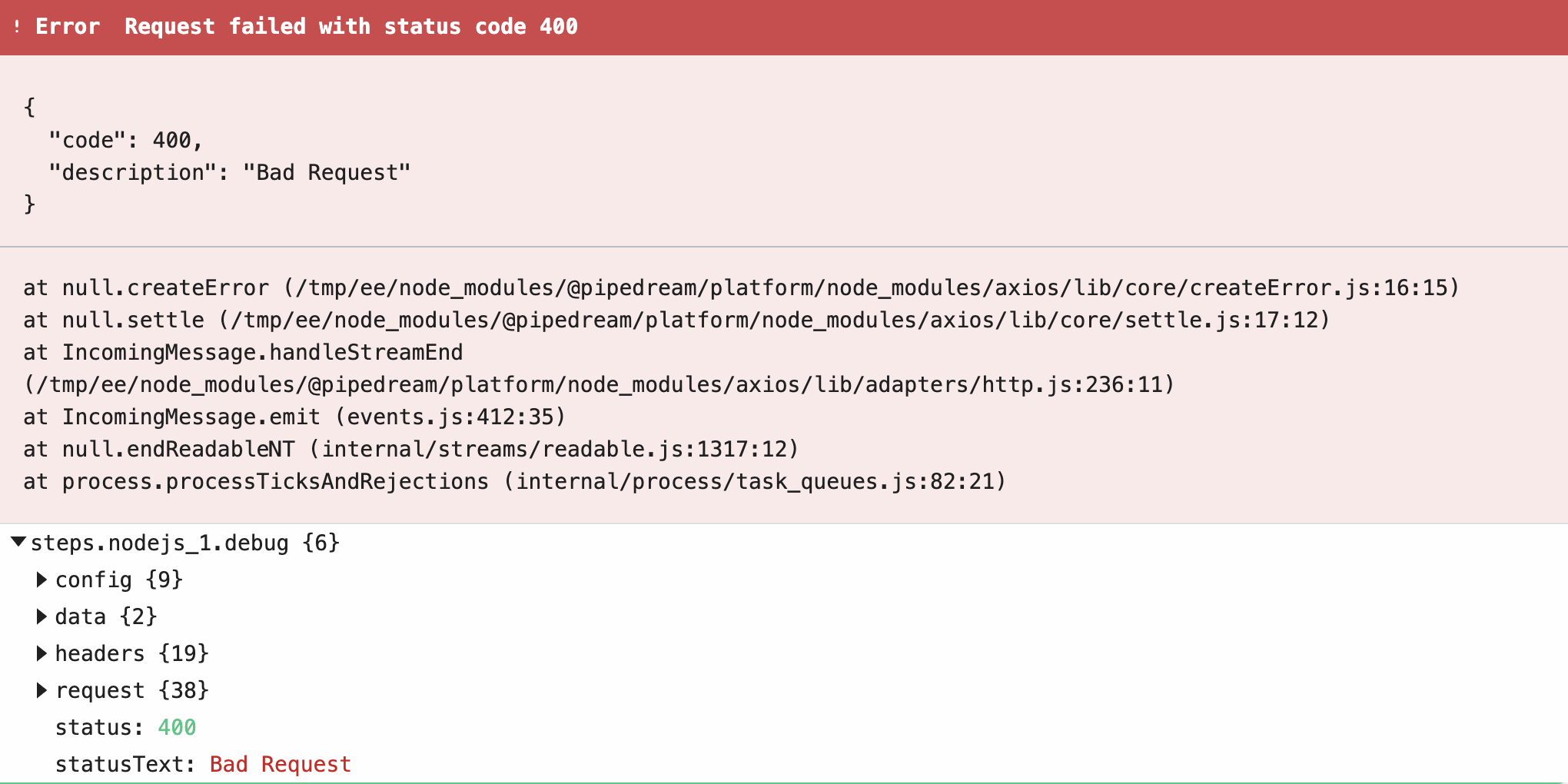# @pipedream/platform axios
# Why @pipedream/platform axios?
axios is an HTTP client for Node.js (see these docs for usage examples).
axios has a simple programming API and works well for most use cases. But its default error handling behavior isn't easy to use. When you make an HTTP request and the server responds with an error code in the 4XX or 5XX range of status codes, axios returns this stack trace:

This only communicates the error code, and not any other information (like the body or headers) returned from the server.
Pipedream publishes an axios wrapper as a part of the @pipedream/platform package (opens new window). This presents the same programming API as axios, but implements two helpful features:
- When the HTTP request succeeds (response code <
400), it returns only thedataproperty of the response object — the HTTP response body. This is typically what users want to see when they make an HTTP request:

- When the HTTP request fails (response code >=
400), it displays a detailed error message in the Pipedream UI (the HTTP response body), and returns the wholeaxiosresponse object so users can review details on the HTTP request and response:

# Using @pipedream/platform axios in component actions
To use @pipedream/platform axios in component actions, import it:
import { axios } from "@pipedream/platform"
@pipedream/platform axios uses methods provided by the $ object, so you'll need to pass that as the first argument to axios when making HTTP requests, and pass the standard axios request config (opens new window) as the second argument.
Here's an example action:
import { axios } from "@pipedream/platform"
export default {
key: "my-test-component",
name: "My Test component",
version: "0.0.1",
type: "action",
async run({ $ }) {
return await axios($, {
url: "https://httpstat.us/200",
})
}
}
